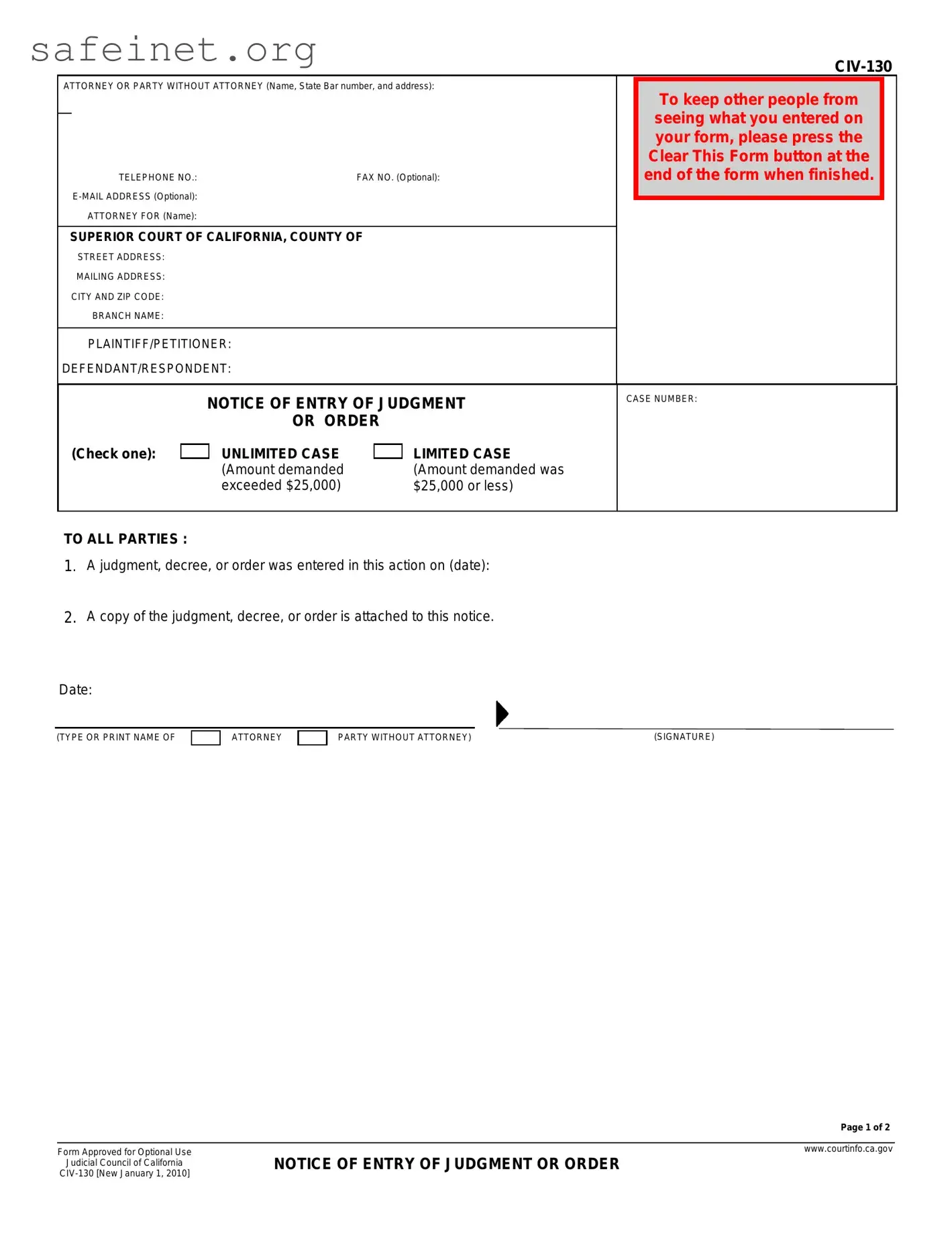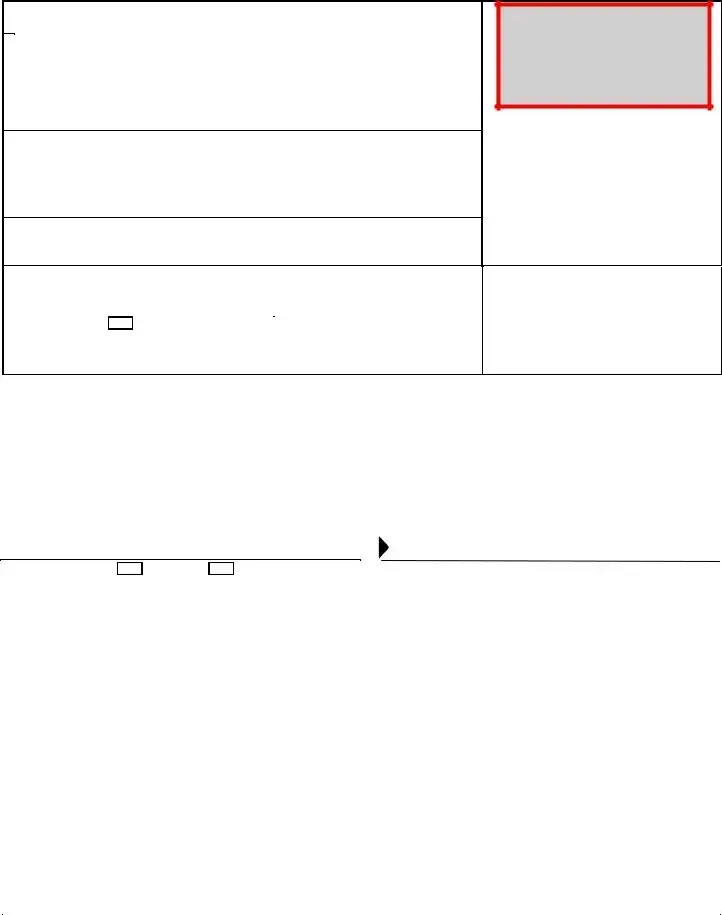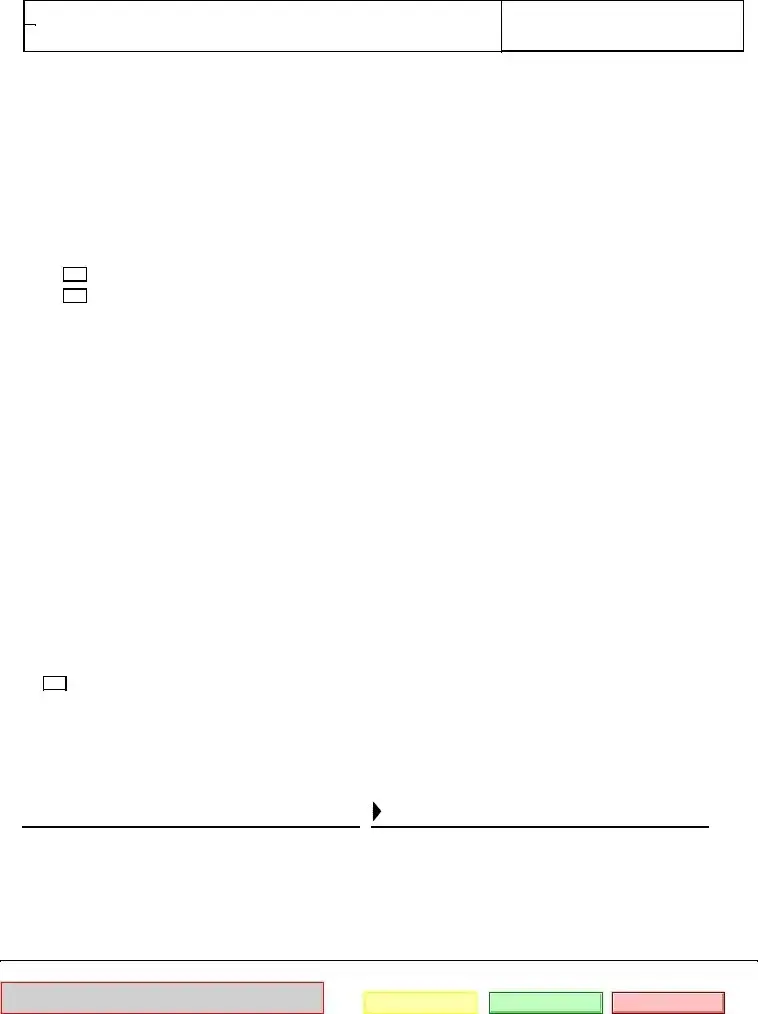The Proof of Service form, commonly used in various legal proceedings, functions similarly to the Civ 130 form. It documents the delivery of legal documents, ensuring that all parties involved in a case are adequately informed. This form requires explicit details about how the documents were served, such as the date, method, and recipients. Like the Civ 130, it emphasizes the importance of formal communication between parties, acting as a record of due process. The completion of both forms involves the affirmations of responsible parties, underscoring their role in the judicial process.
The Notice of Appeal form is another document with similarities to the Civ 130. It initiates the appeal process after a judgment or order has been entered, ensuring that the opposing party and the court are aware of the intent to contest a decision. This form typically requires essential details about the original case, the parties involved, and the specific order being appealed. Both the Notice of Appeal and the Civ 130 serve as formal notifications to related parties, highlighting critical timelines and procedural requirements. They play a crucial role in maintaining the transparency of legal proceedings.
The Judgment form is fundamental to legal processes and parallels the Civ 130 in its function. It officially records the outcome of a trial or hearings, summarizing the decisions made by the court. Like the Civ 130, where a copy of the judgment is attached, the Judgment form typically encompasses necessary identifiers such as case numbers and involved parties. Each document acts to finalize and communicate resolutions to all parties, reinforcing the importance of documented judgments in the legal framework and the necessity for parties to acknowledge the outcomes of their cases.
The Civil Case Management Statement is similarly structured to the Civ 130, providing a summary of the case status to the court. This document is often used prior to trial and includes details like the nature of the case, relief sought, and any pending motions or discovery issues. Both the Civil Case Management Statement and the Civ 130 share the responsibility of keeping all parties informed about the case developments. They ensure that court resources are utilized efficiently, fostering an organized and transparent judicial process.
The Request for Entry of Default form is analogous to the Civ 130 and is utilized in scenarios where a party fails to respond to a complaint. It formally requests that the court recognize the non-responsive party as being in default, thereby expediting legal proceedings. Though the contexts differ slightly, both documents underscore the importance of timely communication with the court. They provide established methods for ensuring that legal processes are not delayed, thus reinforcing the need for prompt responses to court actions.


